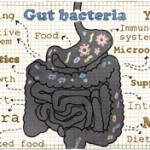All told, the data suggest humans are the primary bacterial vectors in the home. In fact, families are such good bacterial vectors that when they move from one house to another, the microbial community of the new house appears to become rapidly colonized by the family’s microbiota. In addition, in the four homes where families stayed put, humans were more likely to be sources of OTUs than were physical surfaces.
The authors suggest that their work adds to our understanding of the factors that influence bacterial population development and will likely contribute to another project by the same team, Hospital Microbiome. The group is also studying the University of Chicago’s new hospital pavilion and collecting microbial samples from surfaces, air, staff and patients. (posted 10/17/14)
Lara C. Pullen, PhD, is a medical writer based in the Chicago area.
Reference


